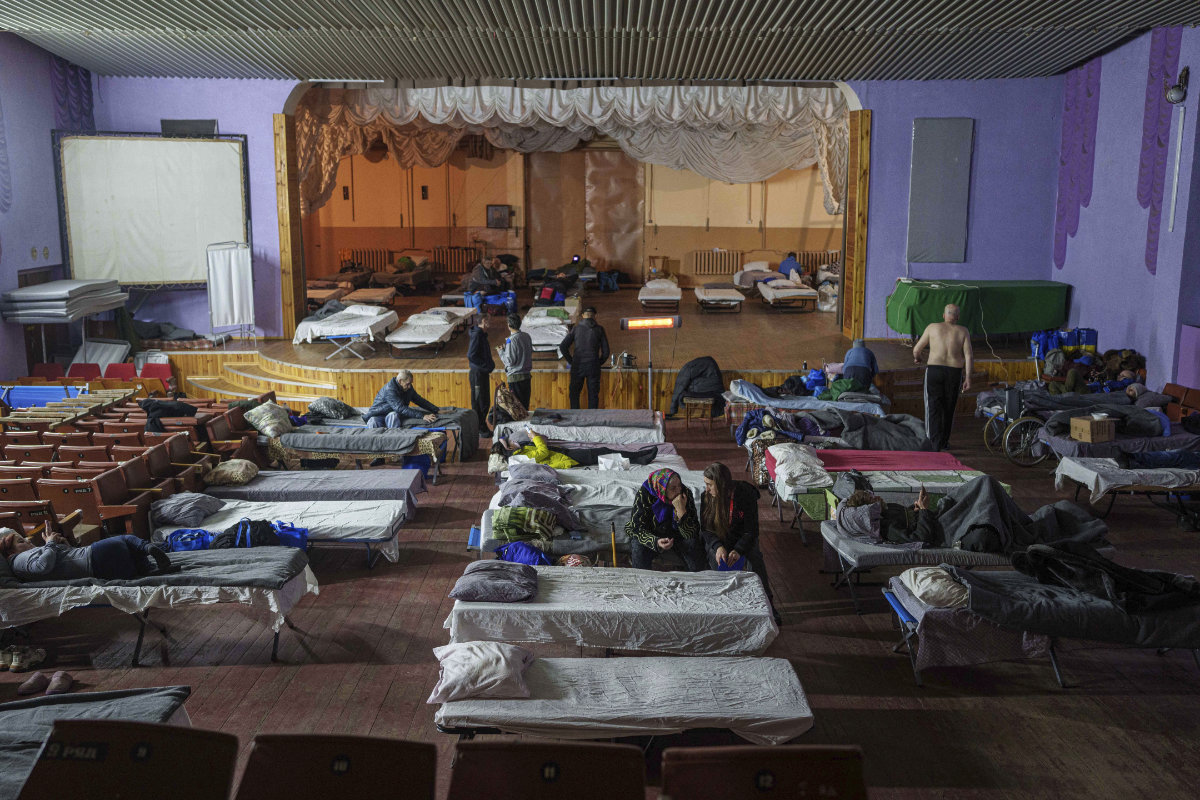LONDON/KYIV: Russian President Vladimir Putin has acknowledged that his army could be fighting in Ukraine for a long time, but for now there will be no second call-up of soldiers.
Putin has rarely spoken about the likely duration of a war that he began more than nine months ago, and in a televised meeting with loyalists on Wednesday, he said, “This can be a long process.”
Russia has been forced into a series of significant retreats in the face of Ukrainian counter-offensives, waged with increasing stocks of Western weaponry, in the east and south since July.
Russia launched what it calls its “special military operation” in February, saying Ukraine’s deepening ties with the West posed a security threat. Kyiv and its allies say the invasion amounts to an imperialist land grab.
In his remarks Putin said the risk of a nuclear war was growing — the latest in a series of such warnings apparently meant to deter Kyiv’s Western backers from more robust involvement — but that Russia would not threaten recklessly to use such weapons.
“We haven’t gone mad, we realize what nuclear weapons are,” Putin said. “We have these means in more advanced and modern form than any other nuclear country ... But we aren’t about to run around the world brandishing this weapon like a razor.”
Around 150,000 of the 300,000 reservists called up in September and October were deployed in Ukraine, 77,000 in combat units, he said. The remaining 150,000 were still at training centers.
“Under these conditions, talk about any additional mobilization measures simply makes no sense,” Putin said.
Russia’s economy has overcome the short-term slump caused by the partial mobilization order, but the disinflationary impact it had in reducing consumer demand has practically disappeared, the central bank said on Wednesday.
Despite recent retreats on the battlefield, including the loss of Kherson, the one Ukrainian provincial capital Russia captured, Putin has said he has no regrets about launching a war that is Europe’s most devastating since World War Two.
He said Russia had already achieved a “significant result” with the acquisition of “new territories” — a reference to the annexation of four partly occupied regions in September that Ukraine and most members of the United Nations condemned as illegal.
Russian forces have fired more than 1,000 rockets and missiles at Ukraine’s power grid, which is still working despite taking major damage, Interfax Ukraine news agency reported on Wednesday, citing Volodymyr Kudrytsky, chief executive of the Ukrenergo grid operator.
Eight recent waves of Russian air strikes on critical infrastructure have seriously damaged the grid and led to emergency and planned outages across the country, including in the capital Kyiv, a city of three million.
Kyiv Mayor Vitali Klitschko warned of an “apocalypse” scenario without power, running water or heat this winter if Russian air strikes on infrastructure continue. He said there was no need for residents to evacuate now, though they should be ready to do so.
Kyiv could be left without central heating at a time when temperatures can fall as low as -15 degrees Celsius (5 degrees Fahrenheit), Klitschko said in an interview with Reuters.
Russia’s ally Belarus said it was moving troops and military hardware to counteract what it called a threat of terrorism, amid signs that Moscow may be pressing Minsk to open a new front in Ukraine as the war has bogged down.
President Alexander Lukashenko, who relied on Russian troops to put down a popular revolt two years ago, has so far kept his own army from joining the war in Ukraine. Russian Defense Minister Sergei Shoigu flew unannounced to the capital Minsk on Saturday, and he and Belarusian counterpart Viktor Khrenin signed amendments to the two countries’ security cooperation agreement, without disclosing the new terms.
On Wednesday, the Belarusian Security Council, quoted by state news agency Belta, said troops and hardware would be moving in the country over the next two days, with imitation weapons used for training. It provided no details about the number of troops or types of hardware that would be moved.
Thousands of Russian troops have deployed in Belarus since October, Ukraine says, and Belarus authorities have increasingly spoken of a threat of “terrorism” from partisans operating from across the border. Lukashenko has ordered his military to compile information about reservists by the end of this year.




























